Batalla del Vino (The Battle of Wine)
@Asim Deb
In Spain, there is a festival Batalla del Vino, where you have to throw wine and strictly only red wine on the other person. Batalla del Vino, in English it means The Battle of Wine. Though it’s a celebration, the Spanish people say it a “battle”, and the armament used by both the sides are only bucket of wine, nothing else. There are many incidents in history related to alcohol, but playing a “battle” by throwing buckets of red wine on the other person is something unique. To add, the battlefield (playground) is fixed, you can not play anywhere as you wish. The battlefield for Batalla del Vino is about 6 kilometers from the city of Haro, a place known as Riscos de Bilibio, near the foothills of the Obarenes Mountains. And also you have to strictly follow the same dress code, irrespective of age, and be a male or female. The dress code is anything white, and a red scarf around your neck.
There is a picturesque small town Haro in the northern Spain, about 250 kilometers from Madrid.

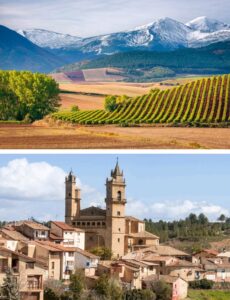
The population of Haro town is about 10,000 and is traditionally famous for high quality “Tapas” (small Spanish savoury dishes, typically served with drinks), and also well known for Spanish “Rioja” (a wine produced in La Rioja, Spain). Up to 40% of the Rioja vineyards are located there, and being vital for their local economy, the town is totally devoted to the producing of the best Rioja wines. Since the city is within the La Rioja wine region, the local people make their armament (red wine) for the battle of wine at their own home. It is estimated that on an average, every participant would have to bath with 50 litres of red wine, the attraction is pouring bucket of wine on each other’s head or throw bucket of wine on each others body. This is the event, the battle is the festival, and that is what is celebrated.

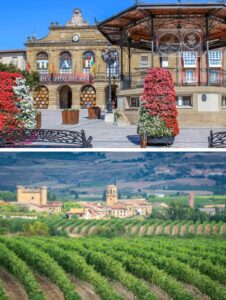
This annual traditional festival, or battle whatever you say is celebrated (or fought) on 29th June of every year. The day is known as The Day of the Patron Saint San Pedro. Some people call it Saint Peter’s Day, and the event is known as the world’s most famous “drink battle”. The origin of this tradition dates back to the 10th century, with a possible dispute with the nearby town of Miranda de Ebro over the ownership of a rural area in the municipality of Riscos de Bilibio, where the festive battle takes place every year. The start of the Wine Festival finds itself in the 13th century, when the Haro had to officially mark the property lines between them and their neighbours in Miranda de Ebro. A legal ruling in 1237 made mention that Haro’s town officials must mark their borders with purple flags each year on San Pedro’s Day and on the first Sunday of each September; and if they failed to do so then the land would be returned to Miranda del Ebro’s authority. Its thought that while the people of two towns congregating for the flag raising on those dates, celebrations and mass services began to take place which eventually led to the famous tradition that we now know as the La Batalla del Vino – or more simply as the Battle of Wine. It was around the year 1710 that there was an actual historical recording of there being a wine fight in the town’s archives. The festival’s history relates to many theories but whatever its actual origin, the Wine Fight of Haro is definitely an amazing unique festival.
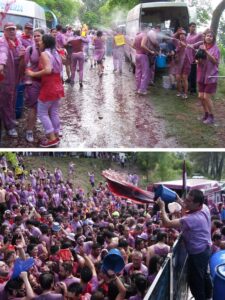


Once everyone has arrived, the city banner is unfurled on the highest rock, which shows the beginning of a religious mass. A little before 7:00 AM, the people, all dressed in white, carry the wine to the Cliffs of Bilibio, either on foot, or in trailers pulled by tractors, or in private vehicles. Around 8:30 or 9:00 AM, the city mayor, who traditionally heads the festivities, leads a procession on horseback to the Chapel of San Felices de Bilibio (about six kilometers north of the city of Haro). It is a procession of people of all ages carrying jugs, bottles, and other types of containers filled with red wine. Upon their arrival to the chapel, the mayor places a banner at the top of the rocks and a mass is celebrated. at the Chapel of San Felices de Bilibio. Saint Felix of Bilibio, master of San Millán in the 6th century, lived and died in what is now known as the Cliffs of Bilibio. According to legend, the dispute between the two towns was resolved when the townspeople of Haro climbed to the top of a nearby mountain and poured wine over the boundary markers to symbolize the town’s claim to the land.

After mass, a rocket is fired, officially announcing the start of wine battle. Around 10:30am, when the wine runs out (it is estimated that 40,000 liters of wine are used every year on this day), people begin to retreat to the city to dry their soaked clothes and have lunch. Around 12 PM, they will enter the city and head towards the bullring where several wild cattle will be released.
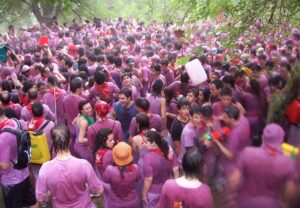

At the end, children receive a lunch of chocolate and biscuits. Their festival continues at the Plaza where there are bullfights for youth in the town bullring.
During the wine fight, be known or stranger, everyone is a target, and people throw wine on each other until everyone is completely soaked and turning the white dress to purple / pink. People follow a practice that they don’t wear their best white clothes, because by the end of the fight, your clothes will never be white again despite its best wash. Actually, people don’t wear anything expensive that they would like to wear again (shoes included).
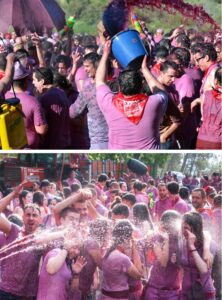
Now-a-days, some people throw wines using bottles, water pistols, or anything that can contain liquid.: buckets, wineskin, sprayers and anything else that can be used to hurl, spray or launch thousands of litres of wine all over the crowd. This soaking was not to everyone’s taste, so for several years the popularity of the pilgrimage decreased, especially for women who did not want their dresses to be stained.
In 1949, the Battle of Wine earned its first mention in Enrique Hermosilla Díez’s article for La Rioja newspaper. Word traveled and the festival regained popularity over the following years. Today, the Haro Wine Festival annually attracts people from all over the world. In 1965 the Spanish Government declared it as a festival of touristic and national interest, as one of the major festivals in Spain. The festivities actually begin a week before the wine fight as the towns 10,000 inhabitants embrace culture, art, live performances, comedy and much much more as part of the Wine Festivals program of events.
In fact, the party starts in the evening of 28th June, down in the town, and the locals advise that you should just let yourself be carried away by the crowd. For outsiders it’s a good idea to make a night of it. While the town is light on accommodation options and full of tourists, the campsite in town is a great, cheap and easy option. If you don’t have any camping gear or want to carry bags of stuff to Haro, don’t worry, tour group possibilities are available.
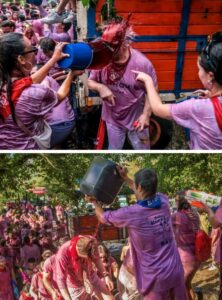

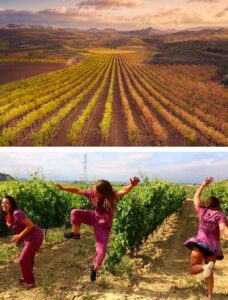
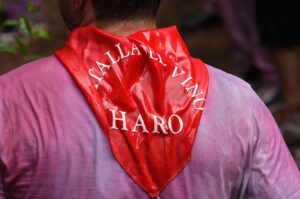
******

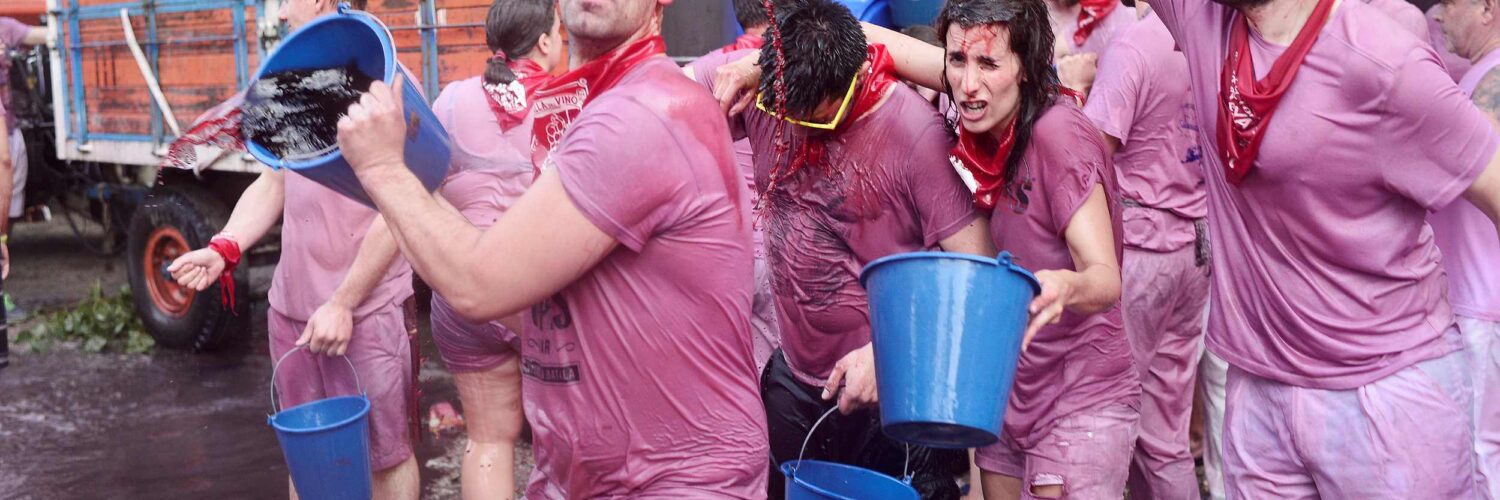

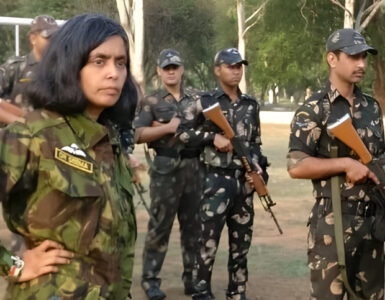











Spanish people are truly fun loving, often they make a simple fun to a celebration. I don’t know how many countries celebrate throwing tomatoes. Here it is throwing wine.
They are really crazy, but we love it.
Thanks author.
আমি ২০১৮ জুন মাসে সপরিবারে স্পেন ঘুরতে গিয়েছিলাম, আর হ্যারো শহরেও গিয়েছি। অনেক পুরনো স্প্যানিশ ল্যান্ডমার্ক স্থাপত্য আছে। আমি ভেবেছিলাম প্রোগ্রাম এডজাস্ট করে ওয়াইন যুদ্ধ দেখস আসি। কিন্তু শুনলাম, যা পোষাক পড়ে যাবো, সে হয়তো আর পরে কোনোদিন ব্যবহার করা যাবে না। প্লাস ওয়াইনে আমাদের চুবিয়ে দিলে তারপর কি করবো?
ইচ্ছে ছিল, ভয়ে গেলাম না।
তবে পরে সবাই বলেছিল, এটা এক লাইফটাইম অভিজ্ঞতা। অন্তত টমেটো ছোঁড়ার থেকে অনেক ভালো।
Really missed something.
Didn’t know about this fascinating festival. Thanks for sharing.
The battle of wine is a famous annual festival of Spain. This article has splendidly and elsborstely described the hidtory of this festival. For an enthusiastic reader this article gives an elaborate knowledge of the pomp snd grandeur of this national festival of Spain.
Once again a product of intense research and a very high standard of well formatted write up. You have covered everything, absolutely 360°.
পড়লাম।
এবং নতুন অনেক কিছু জানলাম যা আগে জানতাম না। আমাকে পড়ার সুযোগ দেওয়ার জন্য ধন্যবাদ।
খুবই ভাল লেখা। অনেক অজানা জিনিস জানতে পারলাম। Europe এ অনেক শহরে অনেক রকম এই ধরনের traditional celebration হয়।
পরবর্তী সময়ে সেই গুলো পড়ার অপেক্ষায় থাকলাম। 🙂🙂🙂👍👍👍👍
Interesting information about this country and fascinating one too. Spain as we have studied in our school days is famous for bull fight which is a barbaric form of sport. But the wine festival which is colorful yet celebrated with a spirit of competitiveness depicts the brighter side of this country. It resembles our festival of Holi but unlike holi this festival is more structured and celebrated in the essence of festival but in the spirit of sport. The photo illustration has added more meaningfulness in the article which has helped this article reach a height of utter significance and value. Best wishes for you Dada, keep venturing with unknown facts and subject matter of interest.
Spain as we studied in our school days is famous for Bull fight, which is a barbaric form of sport . To know about this festival is truly fascinating . It resembles our festival of Holi, but unlike Holi the Spanish festival has a dress code and venue, and more structured and disciplined form of festival with a festive essence but competitive spirit. The photo illustration with the article has helped the article reach a height of excellence. Best wishes and keep enlightening us with informative and interesting article which unravels such unknown events and stories worldwide.
Nice to read your article which is different type but quit interesting. I appreciate your endeavours for collecting uncommon /not much known places & events with historical, social and geographical details.
Thx event looks like our “Doljatra” , colour festival (in original form with liquid color, water sometimes with muds) Only different is instead of preparing seperately “bhang” or “siddhi”, one can consume wine (as shown in pic).
স্প্যানিশরা সত্যিই মনে হয় পাগলা। নইলে বালতি বালতি মদ ছুঁড়ে কেউ যুদ্ধ যুদ্ধ খেলা করে?
প্রবন্ধের সাথে ছবিগুলি অনবদ্য সংযোজন, হ্যারো শহরের আর মদ যুদ্ধের ছবিগুলি দেখে পুরো ফেস্টিভ্যালের ছবিটা চোখের সামনে দেখতে পারলাম।
খুব ভালো লাগলো এই লেখাটা পড়ে।
নমস্কার।
Well written, had to organise the materials from different sources. I think, Spanish people are, in general, fun loving and adventurous people.
This war is similar to Tomato festival of Spain.
Thanks Ashim for the article.
Never heard of this festival before. Looks to have similarities with Indian Holi festival. Very nicely presented by Asim in this blog, with excellent photographs.
It is a fascinating story of Battala Del Vino of Spain,meaning Battle of Wine in English. What a crazy festival!Throwing red wine to people all dressed in white which ultimately turns pink due to the colour of wine. People throwing wine to others,don’t they taste it by cupping hands and pouring in mouth?So foolish people!Anyway,it like our festival of colours,Holi with a difference. This festival reminds me of another bizarre Spanish Tomato festival where people throw Tomato 🍅 to others without hurting.
Celebrate life whatever way u can.
This event was somewhat new to me. I was aware about “La Tomatina” festival which normally takes place on last Wednesday of August and resemble with Spain’s major festival. But surely ” Battle of wine” must be more exciting. Scenic beauty of the place Haro and its vineyards are fascinating. I haven’t yet visited Spain. If I could ever make it, surely “Battle of wine” would feature in my tour itinerary.
Accompanying snaps are wonderful and appropriate with the narration by writer.
Good Job done, Asim.
It’s the battle of wine and not the battle for wine. This fits only with Spanish people. Bulls, Tomatoes and now Wine. Whatever may be the reason, it is simply Crazy.
40,000 litres of Wine is wasted by 10,000 inhabitants in approx 2 hours time. Somewhere mentioned, each taking bath in 50 litres of Wine. Simply a Crazy business.
It resembles our Indian style Holi abroad in an organised way with wine only. Crazy again.
And pulling this unknown event out of worlds’ festivals and presenting this with actual facts and figures and with beautiful pictures is another act by another Crazy person like Asim. A Fun indeed.
Kudos to him.
What a pomp and grandeur in red wine festival ( battle of wine) in back drop of mountain and plateau with vineyard in a beautiful spring day. It is so beautiful people in pink & rose colour . It was unknown to me about this festival in spain before reading your article. It has some similarities with holi festival in our country , though over the years toxic incidents happening during this great festival . I believe in our country festival originated from Radha and Krishna playing with colour to each other. I had seen In our childhood , senior members of families flocked together , singing holi songs with Dholak & Harmonium and moving door to door in locality with dry red coloir ( Abir) . They were rubbing dry red colour to each other. Sweets used to be distributed in every house hold. In Thailand I had seen they are playing with water to each other with great fun.
Another masterpiece. This peculiar and at the same time amazing festival is vividly described with all details. Spain was synonymous with Bull fight to me hitherto. Now I came to know about another unique one.
Wine lovers perhaps exclaim over wastage of precious drink, but taken into account the tourism aspect, it contributes to nation’s economy. So not wastage actually.
Accompanying photographs added value to the article.
Fascinating read about the Batalla del Vino! The way you’ve captured the essence of this lively tradition is impressive. Your description of the wine-soaked battles, the laughter, and the joy is infectious. I felt like I was right there in the midst of the celebration.
Someone will drench me with buckets of red wine, instead of red Gulal!
And sticky sweet wine will be dripping all over me ? My clothes and body will be wet, not with salty perspiration, but sweet sticky wine! And I will go on licking them , shamelessly.
These are beyond my wildest dream.
But Asim Deb assures:
This may come true if I visit a certain township of Spain during a certain festival!
Vive La Spaniola!
Holi Spanish style. Minus the free for all. It’s disciplined and structured…place , time and dress code…and of course the vino. The Spanish know how to have fun.
I knew about La Tomatina and San Fermin festival in Pampalona, not this one.
Thanks to the author in bringing to us this fun nugget of Spanish Culture in front of us.
Somehow it resembles our Indian Holi (দোল) festival. The difference is the celebration with discipline – during a fixed time, at a fixed venue, with a fixed style (throwing wine, and only wine), and fixed uniform dress code.
From the article, it seems they enjoy the fun to the maximum extent. Spanish people are truly fun loving.
I was not aware of any such festival (fun by throwing wine), so my thanks for the author for presenting this article.Somehow it resembles our Indian Holi (দোল) festival. The difference is the celebration with discipline – during a fixed time, at a fixed venue, with a fixed style (throwing wine, and only wine), and fixed uniform dress code.
From the article, it seems they enjoy the fun to the maximum extent. Spanish people are truly fun loving.
I was not aware of any such festival (fun by throwing wine), so my thanks for the author for presenting this article.
The write-up provides detailed insight into Spain’s Batalla del Vino.
Very few of us would know that such a weird celebration can be done as a yearly event, by throwing Red Wine to one another in a gathering! The rarity aspect of the ritual is unique and magnitude of the celebration is astonishing. The author, capturing the excitement of the vibrant festival and describing it’s nitty gritty, made it an interesting read. The pics are simply talking!
পড়লাম।
অনেকটা আমাদের দোল যাত্রার মতো। ইন্টারেস্টিং বিষয়।
খুব ভালো লাগলো।
অসীম, ‘ব্যাটল অফ ওয়াইন’ বেশ মজার ব্যাপার। এটিকে আমি তুলনা করতে পারি আমাদের হোলি খেলার বৃহত্তর আমোদ হিসেবে। অনেকটাই বলিউডের হোলি উৎসবের মত। মাত্র দশ হাজার জনবহুল ছোট্ট এক শহর কীভাবে এই ‘ব্যাটল অফ ওয়াইন’-এর জন্য অসাধারণ জনপ্রিয়তা অর্জন করেছে, ভাবা যায় না। খুব সুন্দর করে তুমি উত্থাপন করেছ।
Wonderfully detailed article. The yearly ocassion of “Wine Battle” is interesting too. The dresses will surely take a hit ( shoes included ) but it’s a fun for the enthusiastic participants. I thank the writer for bringing this extraordinary event of Spain to our notice. This is way better than that tomato throwing event in Spain.
I also liked the way writer compiled the brief history of the place.
Will wait for more from the writer.
Battle of wines! If there is a battle, there will be a winner and what will be his/her (because in some pictures women outnumber men) award /reward, I wondered. But then I came to learn, it is actually a celebration, not competition to commemorate a win of the distant past.
Whatever, seeing buckets of heavenly red wine being hurled to one another make me salivate. Oh, what a wastage, 40,000 ltrs going down the drain.
It also, is not very different from our own festival Holi where coloured waters are hurled at one another by means of pichkari or buckets and then enjoy not with red wine but bang.
Author Asim, as his wont, did a great work compiling all these including some very interesting pictures. Thanks to him for detailing a novel event of fun loving Spaniards which I was not aware of.